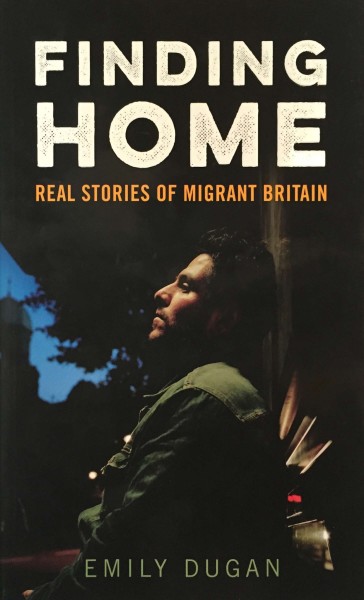- BY Colin Yeo

Review: Finding Home: Real Stories of Migrant Britain
THANKS FOR READING
Older content is locked

A great deal of time and effort goes into producing the information on Free Movement, become a member of Free Movement to get unlimited access to all articles, and much, much more
TAKE FREE MOVEMENT FURTHER
By becoming a member of Free Movement, you not only support the hard-work that goes into maintaining the website, but get access to premium features;
- Single login for personal use
- FREE downloads of Free Movement ebooks
- Access to all Free Movement blog content
- Access to all our online training materials
- Access to our busy forums
- Downloadable CPD certificates
Finding Home: Real Stories of Migrant Britain is a new book by Emily Dugan. Emily is Social Affairs Editor at The Independent and has reported with empathy on immigration issues on a number of occasions. I generally try to avoid films, television and books on immigration and asylum issues simply because I see these things first hand myself through my work. Bringing one’s work home is never healthy and we all need a break. I am glad I made an exception for Emily’s book, though, which I have just finished and which I thoroughly enjoyed.
 The structure is broadly that each tale explores the personal narrative of an individual migrant but is also a lens through which the immigration and asylum system and debate are examined. As in life, some stories are longer than others. The first chapter uses the overnight bus from Romania on 1 January 2014 as its focus and the final chapter uses the entire town of Boston, Lancashire as its study.
The structure is broadly that each tale explores the personal narrative of an individual migrant but is also a lens through which the immigration and asylum system and debate are examined. As in life, some stories are longer than others. The first chapter uses the overnight bus from Romania on 1 January 2014 as its focus and the final chapter uses the entire town of Boston, Lancashire as its study.
As with the lives of the emigrants about whom Emily writes, twin threads of regret and hope run through Finding Home. Some have been forced to leave their homes, families and friends against their will — the Syrian student and the Ahmadi accountant for example — while the search for short term work abroad has for others, to their puzzlement and surprise, morphed into something more permanent. The exile’s conflicted loyalty to both past and future is one with which I am intimately familiar as an immigration lawyer but it is refreshing to hear the whole story told in such a fluent and well observed way.
Emily deliberately writes herself out of the book so that the reader is unaware as to when she was physically present or not. She intends that she disappears, leaving the migrants front and centre. This works brilliantly, but the effect is the polar opposite of that intended. The author is instead omnipresent, and I was left constantly wondering which parts of the narrative she had personally witnessed and what were being recounted second hand. This is particularly so with the story of Emad, the Syrian student who battles to bring his mother to safety through Turkey, across the Mediterranean and then through Europe. His is the most compelling tale and it starkly illustrates how lack of legal routes to safety can force desperate people to rely on unlawful means.
There are actually two of the eight case studies with which I had some personal involvement, I was surprised to see. I knew about the book in the first place because Emily came along to court twice on the case of Harley Miller, in which I was instructed. I even get a mention, as does the Presenting Officer that day, and her cross examination. Buy the book if you want to know more!
The other case in which I had some involvement was that of Ummad, the Ahmadi student who was shot in the head and literally had a bullet in his head when he entered the UK. I was called down to Morden to meet with him before he was interviewed by the Home Office. I remember him as very earnest. His case seemed very strong to me — it remains the only time I’ve met a man with a bullet in his head as far as I know — and he was indeed later granted asylum by the Home Office. Trying to think of what could go wrong, I advised him to try and make sure that the xray of the bullet in his head had his name on and that there was clear evidence linking the evidence of the bullet in a head to his head. I’ve seen some asylum seekers with horrendous torture scarring refused asylum by the Home Office on the basis that the photographs of the scars do not show the person’s face and therefore could be on anyone’s body.
Ummad’s case is perhaps the most poignant. The attack occurred during his brother’s marriage celebration and Ummad’s brother and father both died. The bride had been resident in the United States and nine months later has a son to a dead father. Ummad ends up marrying her. His chapter ends with her returning to the United States alone.
I highly recommend this book. As a lawyer I have long been aware that I only ever scratch the surface with my clients, and the needs of the legal process require a rather shallow, stilted and artificial account. In these times of austerity it is the job of the lawyer to give prominence to the parts of the account relevant to the legal criteria and to skirt over the rest, no matter how much the client wants to discuss it. I found it refreshing to hear the whole story for a change.
SHARE

